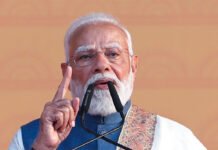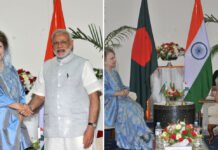INVC Business & International Desk
New Delhi/Washington, April 14, 2025
India and the United States are entering a critical phase in bilateral trade negotiations that could reshape the future of tariffs, technology exchange, and market access. With the Biden administration rolling out a bold “90 Trade Deals in 90 Days” campaign, both sides have launched sector-specific virtual talks aimed at finalizing an initial set of actionable trade objectives by end of May.
According to top Indian government officials, these virtual negotiations will pave the way for face-to-face formal discussions later this year. The goal? A mutually beneficial trade agreement that aligns with both nations’ evolving macroeconomic priorities and tariff sensitivities.
“We are looking to identify fast-track sectors where deals can be closed quickly while flagging sensitive areas that need more time,” said a senior official involved in the talks.
U.S. Tariff Rollback Opens Doors for India
This new momentum follows U.S. President Joe Biden’s recent move to suspend retaliatory tariffs for 90 days—except for China—as a strategic measure to counter recession fears and inflationary pressures. The U.S. currently imposes a 10% basic duty on most imports in addition to Most-Favored-Nation (MFN) tariffs.
This tariff holiday creates an early-mover opportunity for India, which had already initiated trade discussions with the U.S. before the retaliatory tariffs were paused. As reported earlier by INVC, this proactive approach could give India a crucial edge in securing a comprehensive agreement.
Roadmap: Interim Deal by July, Phase One by December
The two countries are not only targeting a full bilateral trade deal by the end of 2025, but are also exploring the possibility of sealing an interim trade agreement by July 9, should talks progress favorably.
Government sources suggest that the key areas under discussion include:
Tariff harmonization
Digital trade and data localization
Market access for pharmaceuticals and agricultural goods
Technology and AI cooperation
“We may not finalize everything within six months,” the official added, “but we’re committed to laying a strong foundation for a phased deal.”
Expert View: ‘MFN Principle Must Be Honored’
Renowned trade analyst Prof. Vishwajit Dhar from the Council for Social Development emphasized caution. “Signing a major deal in 90 days is ambitious. If the U.S. demands legal or regulatory changes, they must be done under the MFN principle and apply to all nations equally,” he stated.
As India treads carefully amid global economic turbulence, trade policy reforms and strategic bilateral ties remain crucial levers for long-term growth and stability.
















